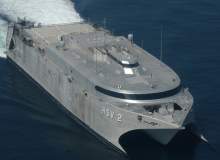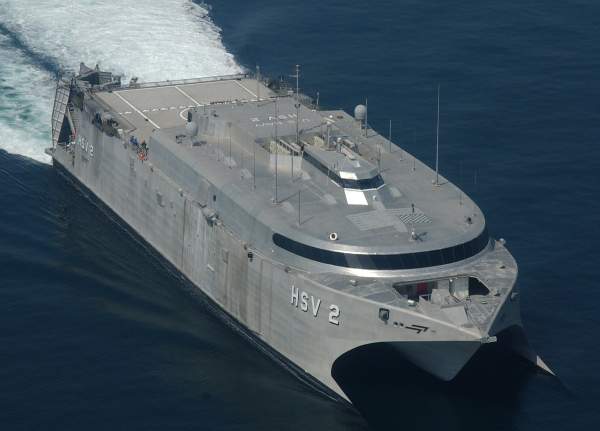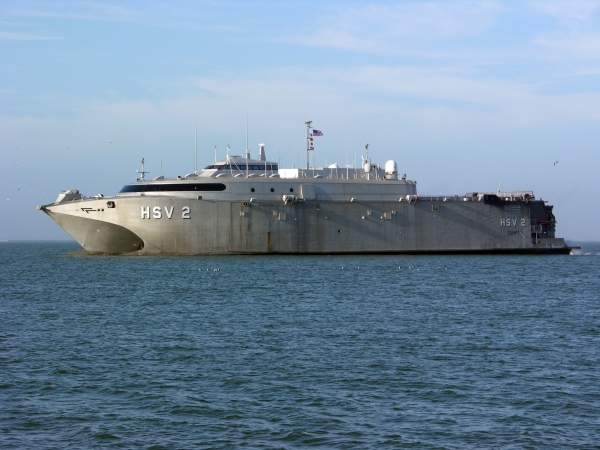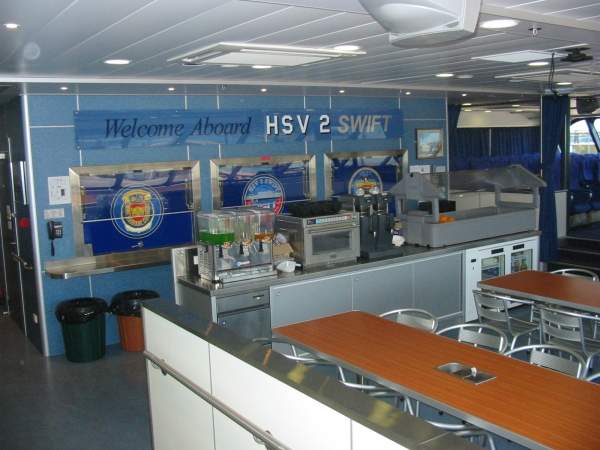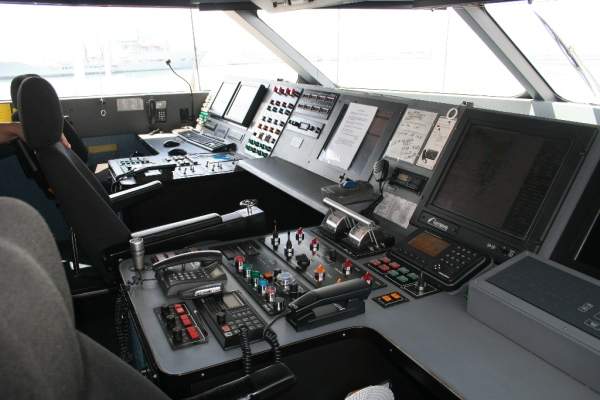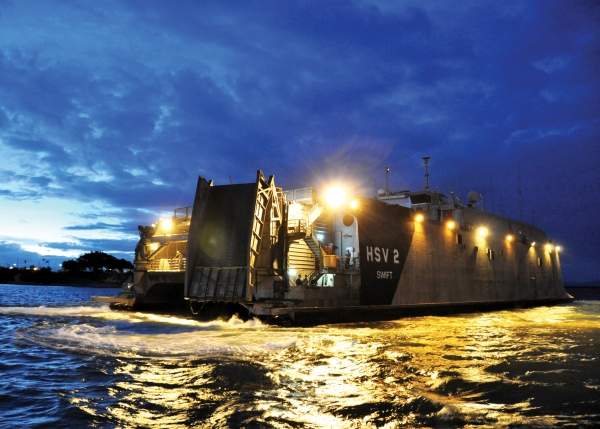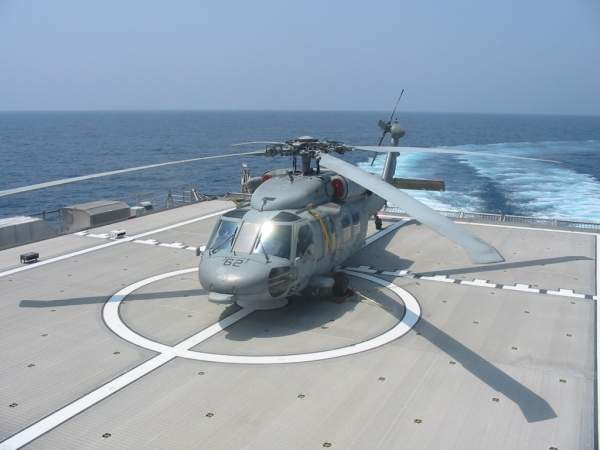The HSV-2 Swift (HSV 2) is a chartered high-speed vessel of the US Navy Military Sealift Command. The hybrid wave piercing catamaran was designed and built by Bollinger / Incat in Hobart, Tasmania.
It is the fourth high speed catamaran built by the partners, after HMAS Jervis Bay, HSV X1 Joint Venture and TSV 1X Spearhead. The HSV-2 Swift is also acting as a prototype for the joint high speed vessel (JHSV) programme.
The HSV-2 Swift is owned and operated by the New York-based shipping company Sealift. The HSV-2 was leased by the US Navy and delivered to the Military Sealift Command from Lockport, Louisiana, in August 2003.
The vessel was built for the Navy in eight months from the award of contract. Sea trials of the HSV-2 were conducted from February to May 2004. She was designed to conduct sea basing tests and support transformational mine warfare modular payloads.
The vessel has a crew of 35-18 military personnel and 17 civilian contract mariners from the Seafarers International Union and American Maritime Officers.
The vessel serves for 11 months of every year and participates in exercises such as Southern Partnership Station by USSOUTHCOM AOR. The HSV-2 catamaran currently serves the navy in humanitarian missions, experiments, training, exercises and fleet support operations. In April 2011, the vessel was deployed in the disaster relief operations in Haiti.
Design and features of the chartered high-speed vessel
The HSV-2 is an all-aluminium naval vessel. It is 97.22m long and has a beam of 26.6m, a draft of 3.43m and a mission deck of 2,601m2.
The 24.7m x 15.24m helideck of the vessel is NAVAIR certified to carry helicopters such as the AH-1, MH-60, CH-46 and UH-1. She can also accommodate about 350 personnel and military equipment, or a payload of up to 500t at a top speed of about 35kt.
She has space to store and maintain two MH-60 choppers in weather protected space. A ramp at the stern allows loading and unloading of military vehicles of up to 11,793kg, such as an M1A1.
The vehicles are moved to and fro the flight deck using a crane that supports 9,979kg RIB or small craft launch and recovery.
Accommodation onboard HSV-2 Swift
The HSV has 170 sleeping berths, crew storerooms and 128 aircraft-style permanent seating and 122 temporary seating, configurable to additional berthing for 87 people.
It has a 39-seat crew mess / day. Other amenities include laundry space, medical space, a planning room, sanitary and watertight storage spaces, office spaces and computer workstations.
Safety systems, propulsion and performance of the US Navy Military Sealift Command’s HSV 2
The vessel is equipped with two marine evacuation systems consisting of a 17m inflatable slide with SOLAS A pack life rafts for a total capacity of 500 people.
A 30hp SOLAS RHIB dinghy acts as a rescue boat and another 7m RHIB stowed on the deck can carry about 15 personnel. It is also mounted with four 0.5C M2 Browning machine guns.
The HSV is powered by four resiliently mounted Caterpillar 3618 marine diesel engines. Each of the engines produces 7,200kW at 35/53oC and has a vertical dry exhaust system.
Four Wartsila LIPS LJ120E waterjets allow the reverse and steering of the vessel. Four ZF 53000 NRH gearboxes provide the transmission.
An active Maritime Dynamics ride control system with fold-down T-foil, bow fins and trim tabs aft increase passenger comfort. The HSV-2 Swift has a minimum operating range of 1,100nmi at 35kt and can be operated 24 hours a day at speeds of 3-10kt.
It does not need tugboats for pier assistance and can manoeuvre in waters of depths as low as 12ft.
Command and control
The catamaran is equipped with a Mine Countermeasures Squadron Staff (MCMRON) designed command and control (C2) facility. It provides commercial and military satellite communications and has all digital switch transceivers allowing HF, VHF and UHF communications.
The main deck has a combat information centre (CIC) with workstations and tactical displays, a mission planning and post mission analysis room, a conferencing facility and manned equipment space.
A 700ft² upper C4ISR room and a 200ft2 lower C4I equipment room supply 70kW for electrical and climatic control requirements.
A multicompartment and an equipment room is connected to the command centre configurable to allow five independent missions.

